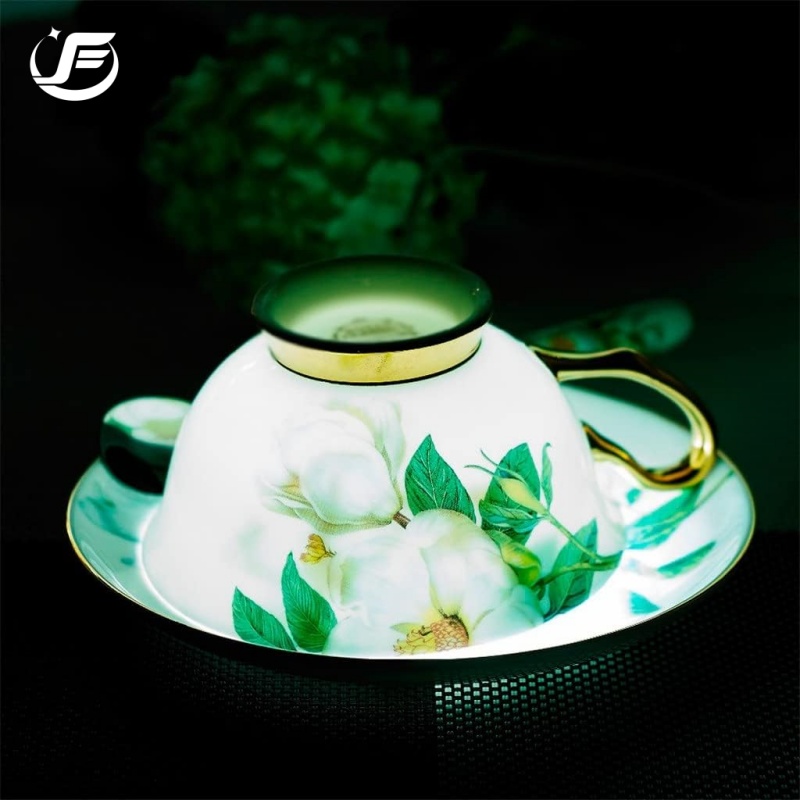
When choosing high-quality ceramic tableware, two popular options often come up: bone china and new bone china. While they may look similar at first glance, these materials have distinct differences in composition, appearance, and durability. This guide will help you understand their unique characteristics so you can make an informed decision when selecting fine tableware.
Bone china is a premium type of porcelain made by adding bone ash (derived from animal bones) to traditional ceramic materials. It is known for its lightweight, delicate appearance, and exceptional strength.
Composition: Typically contains 30-50% bone ash, which gives it a unique translucency and softness.
Color & Appearance: Has a natural warm ivory tone due to the bone ash content.
Durability: Despite being lightweight and thin, bone china is extremely strong and chip-resistant.
Usage: Commonly used in high-end tableware, fine dining restaurants, and luxury hotels.
New bone china is a modern alternative to traditional bone china that does not contain animal bone ash. Instead, manufacturers use synthetic or mineral-based materials to replicate the appearance and properties of bone china.
Composition: No actual bone ash, but it mimics the look and feel of bone china using other mineral additives.
Color & Appearance: Usually whiter and brighter compared to bone china.
Durability: Slightly heavier than bone china but still stronger than standard porcelain.
Usage: A more affordable yet elegant option for casual dining and everyday use.
| Feature | Bone China | New Bone China |
|---|---|---|
| Bone Ash Content | 30-50% real bone ash | No bone ash, synthetic alternatives |
| Color | Warm ivory tone | Bright white |
| Weight | Lightweight | Slightly heavier |
| Durability | Very strong and chip-resistant | Strong, but less so than bone china |
| Translucency | High translucency when held against light | Less translucent |
| Price | More expensive due to real bone ash | More affordable |
If you are trying to determine whether a ceramic piece is bone china or new bone china, follow these steps:
Bone china has a soft ivory or off-white tone.
New bone china is typically brighter white.
Hold the ceramic piece against the light:
Bone china is more translucent, allowing light to pass through.
New bone china appears more opaque.
Many brands label their products with terms like "Bone China" or "New Bone China" on the bottom.
If in doubt, ask the supplier or manufacturer for details.
Your choice between bone china and new bone china depends on your budget, usage, and ethical preferences.
Choose Bone China If:
You want a luxurious and high-end dining experience.
You prefer a lightweight yet strong tableware option.
You value heritage and craftsmanship.
Choose New Bone China If:
You want a budget-friendly alternative with a similar appearance.
You prefer a more eco-friendly and animal-free option.
You need durable yet stylish tableware for everyday use.
If you are looking for premium bone china or new bone china tableware in bulk, Fancyware Ceramics offers a wide selection of customizable, high-quality ceramic products for businesses, restaurants, and retailers. Their manufacturing expertise ensures you receive durable, elegant, and cost-effective tableware solutions.
Understanding the differences between bone china and new bone china helps you select the perfect ceramic tableware for your needs. Whether you prefer the classic elegance of bone china or the modern practicality of new bone china, both materials offer unique benefits.
For businesses looking to source high-quality porcelain and ceramic tableware, working with a reliable manufacturer in China like Fancyware Ceramics ensures you get the best balance of quality, price, and customization options.